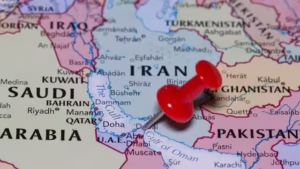INRODUCTION
-As a ceasefire between Iran and Israel takes effect on June 24, the prospects for the ongoing conflict and the role of U.S. involvement remain precarious.

This uncertainty is underscored by Iran’s recent retaliatory attack on a U.S. military base located overseas, which occurred just a day before the ceasefire was announced.
The dynamics of the situation are complicated, as both nations navigate the delicate balance of power in the region, while the United States contemplates its strategic position amidst escalating tensions.
The ceasefire may provide a temporary respite, but the underlying issues that fueled the conflict persist, leaving the future of peace and stability in the area in question.
The Middle East remains engulfed in chaos following a 12-day conflict that escalated dramatically on June 21, when President Donald Trump authorized a series of missile strikes targeting three Iranian nuclear facilities.
This decisive action has prompted widespread speculation among global leaders, financial markets, and the American public regarding Iran’s potential response.
The first indication of retaliation came on June 23, when Iran launched multiple missiles at the largest U.S. military base in the region, located just outside Doha, Qatar.
This act of aggression has heightened tensions and raised concerns about the broader implications for regional stability and international relations, as stakeholders closely monitor the unfolding situation.
It remains uncertain whether Iran’s recent attacks on the Al Udeid Air Base signify the conclusion of its military response; however, the Islamic Republic possesses an additional strategic asset that could be leveraged if hostilities persist: the Strait of Hormuz.
This vital waterway, through which a significant portion of the world’s oil supply is transported, serves as a critical chokepoint in global trade.
Should tensions escalate further, Iran could utilize its control over this strategic passage to exert pressure on international shipping and disrupt energy supplies, thereby amplifying the stakes of the ongoing conflict.
The potential for Iran to influence maritime traffic in the Strait of Hormuz underscores the complexities of the geopolitical landscape in the region and highlights the intricate interplay between military actions and economic repercussions.
The Strait of Hormuz serves as a critical artery for global oil transportation, facilitating the movement of approximately 20% of the world’s oil and gas supplies.
This narrow waterway, located between Iran and Oman, is strategically significant due to its role in connecting the Persian Gulf with the Arabian Sea.
The strait is not only vital for the economies of oil-exporting nations in the region but also plays a crucial role in the energy security of countries around the world.
Given its importance, any disruption in this passage can have far-reaching implications for global energy markets, highlighting the geopolitical tensions that often surround this pivotal maritime route.
The slender waterway, narrowing to a mere 21 miles at its most constricted point, serves as a vital link between the Persian Gulf and the Gulf of Oman, ultimately leading to the expansive Arabian Sea.
This critical maritime passage is flanked on one side by the rugged coastline of Iran, while on the opposite side lies a small peninsula belonging to Oman.
The strategic significance of this channel cannot be overstated, as it represents a crucial choke point for maritime traffic, influencing trade routes and geopolitical dynamics in the region.
The geographical features surrounding this narrow stretch of water not only enhance its importance but also pose challenges for navigation and security, making it a focal point for regional and international interests.
The route in question serves as a crucial artery for the exportation of oil from some of the world’s leading producers, including Saudi Arabia, Iraq, Iran, Qatar, and the United Arab Emirates.
This strategic passage not only facilitates the transportation of vast quantities of crude oil but also plays a significant role in the global energy market, influencing prices and supply dynamics.
Given the geopolitical importance of these nations, the route is essential for maintaining the flow of energy resources to various international markets, thereby underscoring its significance in the broader context of global trade and economic stability.
The reliability and security of this route are paramount, as any disruption could have far-reaching implications for energy security and economic conditions worldwide.